6 Types of Hydrangeas Every Good Gardener Should Know – And Grow for a Garden Full of Gorgeous Blooms From Spring to Fall
There are so many different hydrangeas, it can be a bit overwhelming. I've made it easy for you. Here are the 6 most common types of hydrangeas you should know.
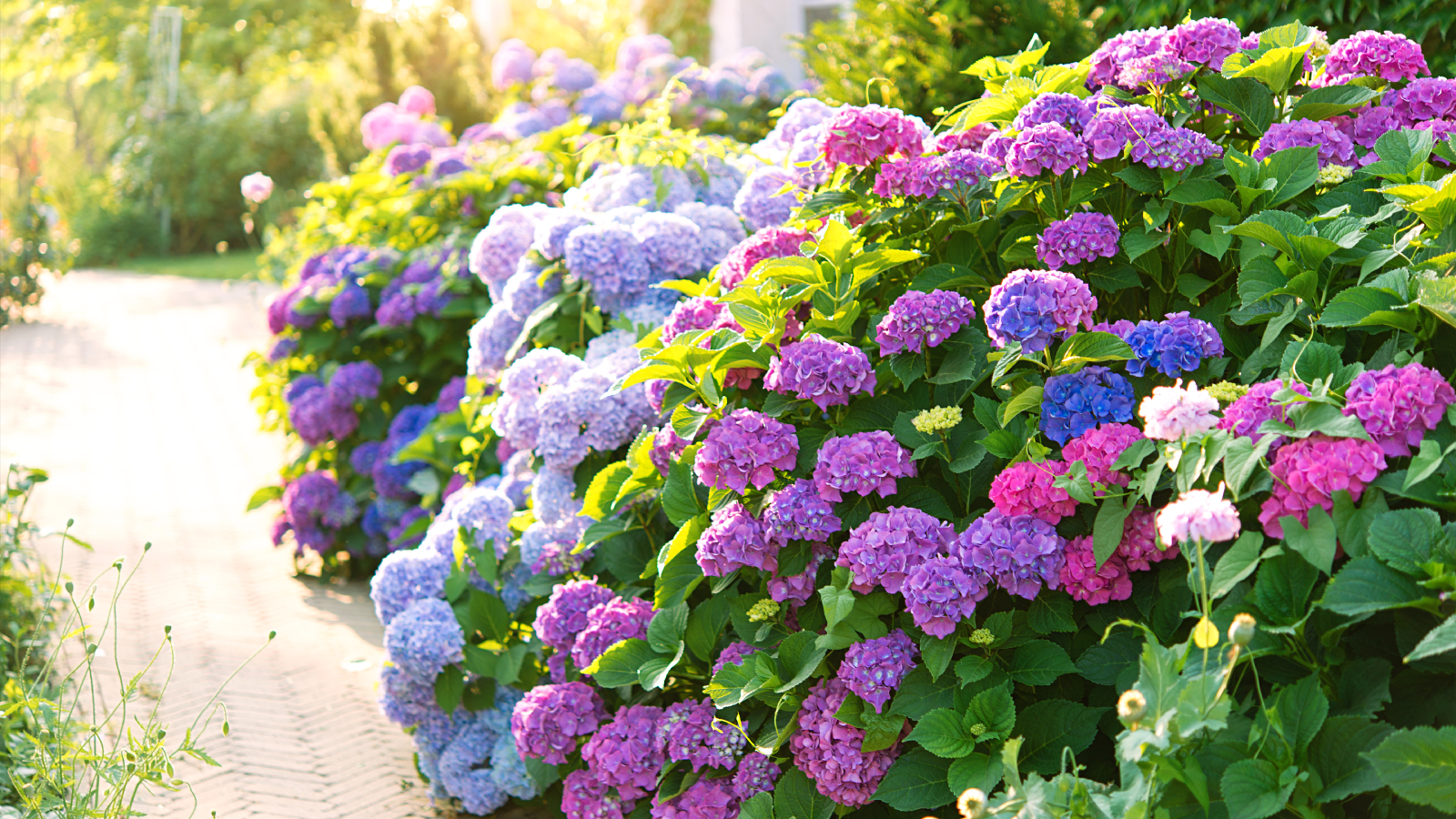

Laura Walters
As a confirmed hydrangea addict, I am always eager to bring a new variety into my garden. Like many people, I started with the bigleaf hydrangea and got excited by changing the flower color based on the acidity of the soil.
But I wasn’t faithful to this variety! Over the years, I have brought all of the big six hydrangea varieties into one of my gardens: bigleaf, smooth, oakleaf, panicle, mountain, and climbing. I’m not done though—almost every week it seems, I find a new and fascinating cultivar that I just can’t resist.
Even if you aren’t quite as far down the hydrangea highway as I am, it pays to get acquainted with the most common types of hydrangeas. Different hydrangea plants add different accents to your garden, so it makes sense to investigate all the types to see what your landscape needs.
Here are the varieties every good gardener should know and grow for a gorgeous, hydrangea-filled garden. Plus, I’ll share some hydrangea care tips that have kept all my varied varieties happy over the years.
Common Hydrangea Varieties
There are so many different types and cultivars of hydrangeas that it may not even be possible to get to know them all. But there are six major varieties that are extremely common. You’ve likely seen them in botanical gardens, your neighbors’ landscapes, or the nursery. Here’s the rundown.
1. Bigleaf Hydrangea

Bigleaf hydrangea (Hydrangea macrophylla) is probably the most popular and common variety. It’s likely what comes to mind when someone says the word “hydrangea.” This is the shrub to grow if you want to change the color of your hydrangea with the acidity of the soil.
Bigleaf hydrangea have large leaves (like the common name suggests) with jagged edges. This species offers two different types of bloom, though. The first type is the mophead hydrangea, which has globe-shaped flower clusters with masses of sterile, showy flowers and tiny, fertile flowers hidden under them.
Sign up for the Gardening Know How newsletter today and receive a free copy of our e-book "How to Grow Delicious Tomatoes".
The second type is the lacecap hydrangea. Lacecaps have a central disk of short, fertile blooms ringed by showy, sterile flowers, which create flower heads that look like frilly lace doilies.
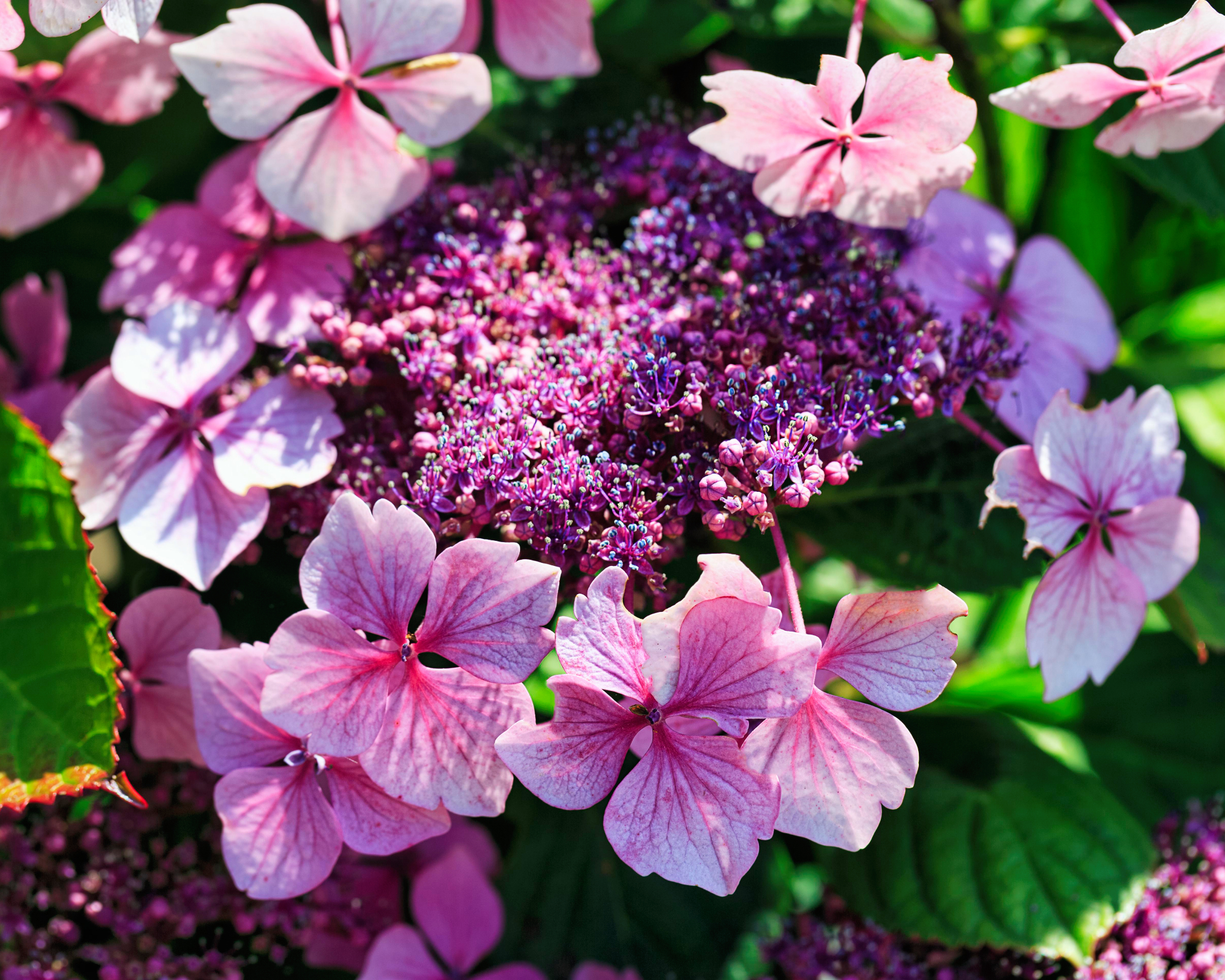
Many cultivars exist with different characteristics including flower color and size—some can grow up to 10 feet (2.5 m) tall and wide. This type of hydrangea prefers afternoon shade and may need to be protected from cold and wind in certain regions. Most cultivars are hardy in USDA zones 6 to 9.
Most popular bigleaf hydrangea bloom on old wood. That means you should prune soon after the flowers fade, generally before September. But if you have a new cultivar, read the label that came on your plant to see whether they bloom on old or new wood. If they bloom on new wood, prune hydrangeas in late winter.
Explore tons of beautiful blue, pink, and purple bigleaf hydrangeas for sale online from Home Depot.
2. Mountain Hydrangea
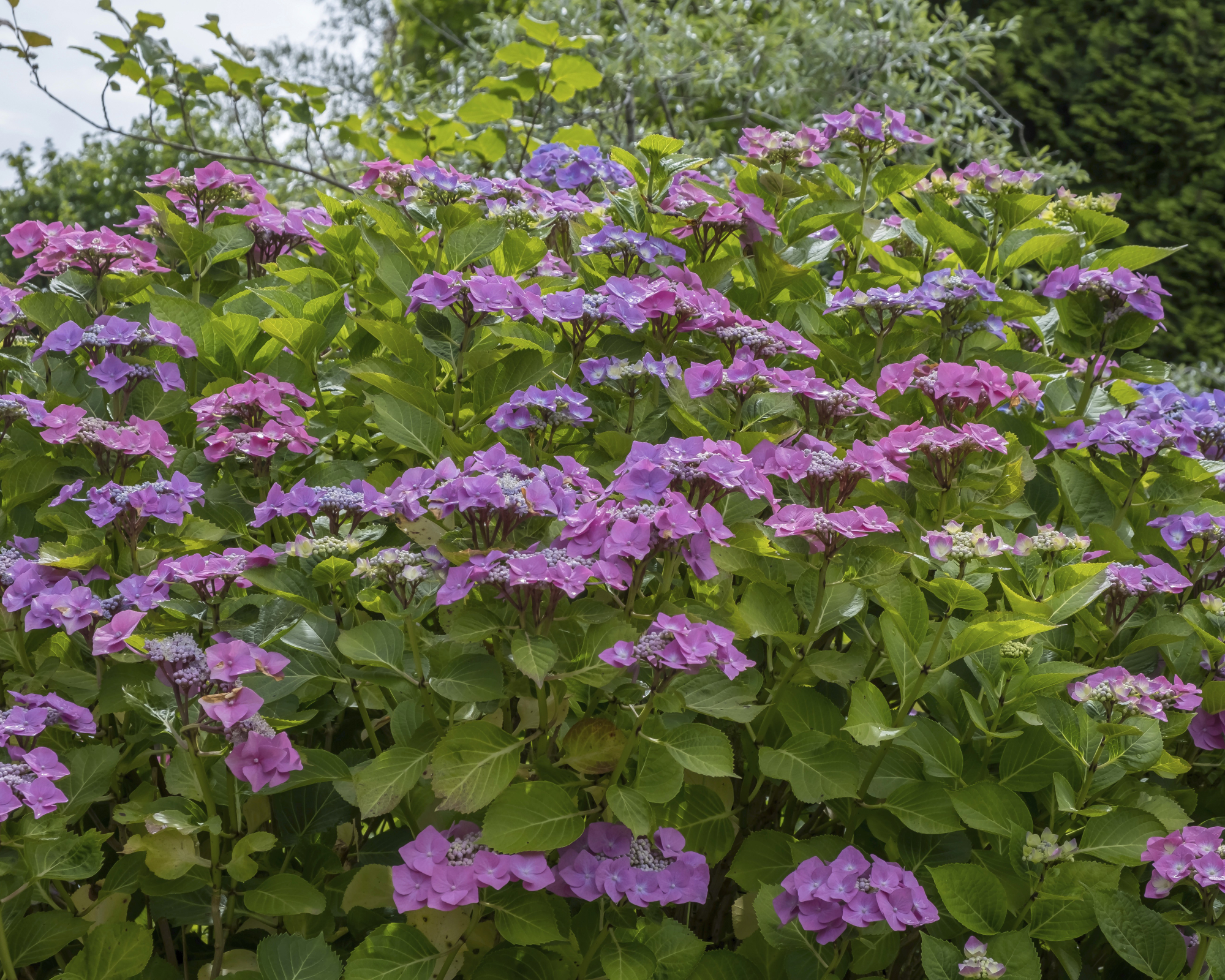
Mountain hydrangea (Hydrangea serrata) is not the second most common variety of hydrangea, but I’m listing it second because it is so similar to bigleaf. It is a smaller, more compact type of hydrangea with more petite leaves. This shrub only grows to between 2 and 4 feet (0.6-1.3 m) tall.
The mountain hydrangea’s flowers, ranging from blue to pink depending on the pH of the soil, are more often lacecap-like, but mophead flowers do grow on some cultivars. Mountain hydrangeas bloom on both old and new wood, but older shrubs likely bloom only on old wood. Keep this in mind if you have an older mountain hydrangea in your yard or garden.
Make pruning simple by selecting a reblooming shrub that produces flowers all summer long on both new and old wood, like one of these gorgeous mountain hydrangeas from Wayside Gardens.
3. Smooth Hydrangea
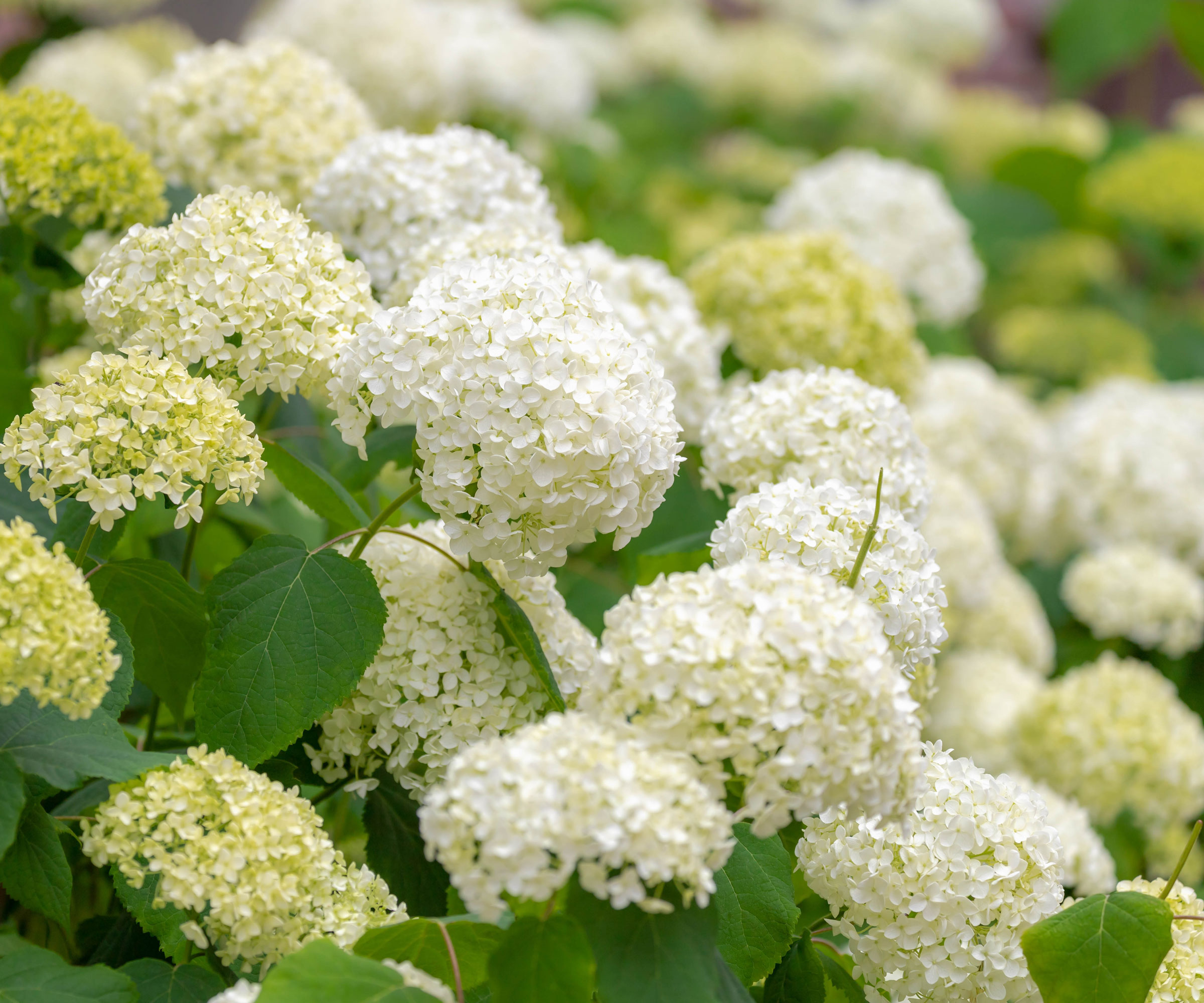
Smooth hydrangea (Hydrangea arborescens) are the second in popularity after bigleaf. The cultivars ‘Annabelle’ is particularly beloved by gardeners everywhere for their huge flower clusters. Annabelle, which you can buy in the Gardening Know How Shop, has flower heads up to 12 inches (31 cm) across.
This North American native hydrangea variety may get its common name from the fact that its leaf edges are smooth, not jagged like bigleaf. These are dense, rounded shrubs that usually grow to around 4 feet (1.3m) tall. They are far hardier than either bigleaf or mountain hydrangeas and are hardy down to USDA growing zone 3. This makes them one of the best hydrangeas for different growing zones that are further north.
The classic smooth hydrangea grows white, round flower clusters. But other cultivars of this species have cream, pink, and even lime green flowers. In all cases, the blooms will turn lime green later in the summer.
Smooth hydrangea shrubs bud on new wood each year, which means you can prune them up through late winter. However, they are also known for reblooming the same season if you trim them after June flowers wither. They grow in light to deep shade.
4. Oakleaf Hydrangea
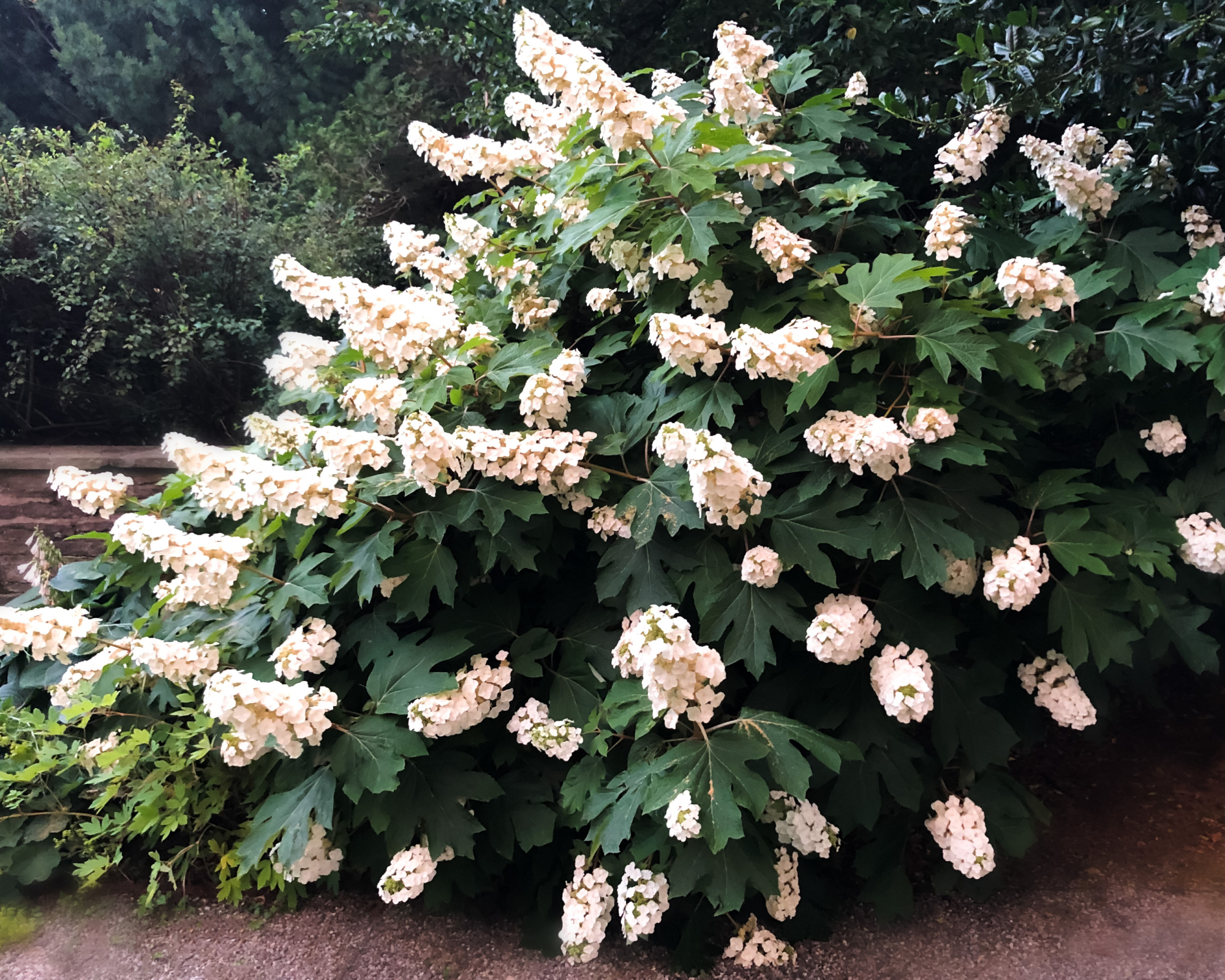
Are you looking for a beautiful fall foliage? Try the oakleaf hydrangea (Hydrangea quercifolia), one of the few hydrangea varieties to offer brilliant fall color with leaves that turn scarlet and burgundy as autumn approaches.
This North American native shrub has lobed leaves that look like large and attractive oak leaves, giving this hydrangea its name. Leaves can reach up to 12 inches (0.3 m) long and blaze in brilliant red and purple in fall.
The oakleaf hydrangea’s white blooms are abundant and big, with panicles sometimes growing up to 1 foot (0.3m) long. The flowers start out white as they first open, then mature to a pinky mauve as the season progresses. Oakleaf hydrangeas bloom on old wood. So that means you need to prune oakleaf hydrangeas soon after the flowers fade.
The oakleaf hydrangea can tolerate both sun and shade and is very adaptable in the landscape. The growth habit of the oakleaf hydrangea varies depending on the cultivar—from rambling and vine-like to tall and tree-like. The short cultivars often “ramble,” growing wider than they are tall, while tall cultivars can quickly shoot up to 8 feet (2.6 m) high.
‘Gatsby Pink,’ which is available at Home Depot, is a romantic oakleaf cultivar with blush-colored blooms. Our gardening experts also love the ‘Alice’ oakleaf hydrangea in the Gardening Know How Shop for its classic white blooms that pollinators enjoy just as much as gardeners.
5. Panicle Hydrangea
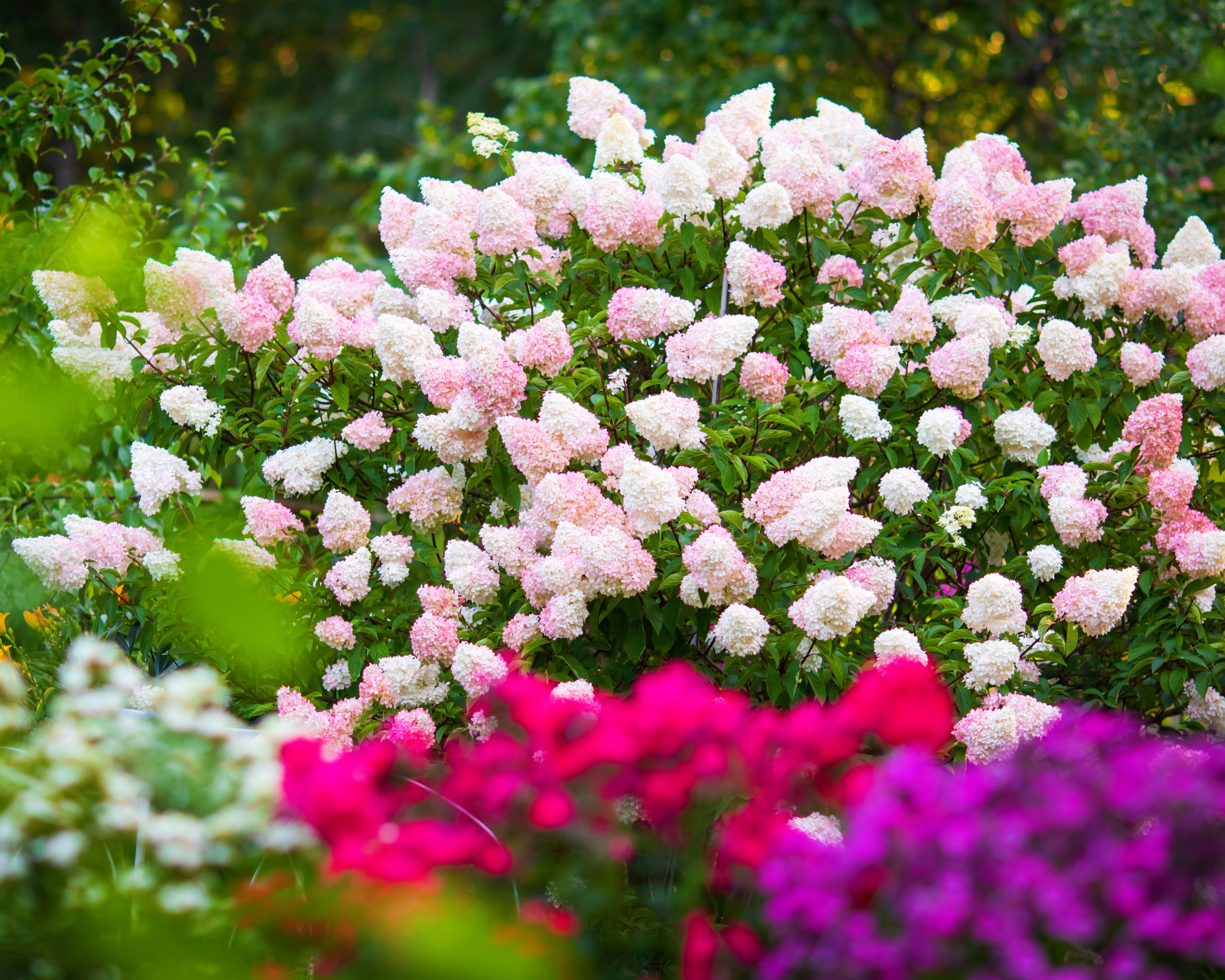
The panicle hydrangea (Hydrangea paniculata) is most often grown as a shrub or small hydrangea tree, though they can get quite large. Some cultivars grow up to 20 feet (6 m) high and wide.
Bloom color, size, and shrub structure varies wildly between the different types of panicle hydrangeas. This variety wows with showy pyramidal panicles of flowers that can be white, cream, lime green, pink, or red. In some panicle hydrangea cultivars, the flowers are full and rounded. But in others, showy infertile flowers and small fertile flowers grow together for a unique, lacy look.
You can find both tall and short versions of panicle hydrangea. One of the most popular panicle cultivars ever is ‘Limelight,’ which is available in the Gardening Know How Shop. It grows to 8 feet (2.6 m) tall, but the compact version, ‘Little Lime,’ which you can get at Home Depot, grows to just 5 feet (1.6 m) tall.

'Grandiflora,' is also popular and true to its name, producing huge white flower clusters up to 18 inches (46 cm) long. This hydrangea will often droop near the end of the season due to the weight of the large blooms.
Of all the different hydrangea plants, growing panicle hydrangeas is the easiest since they are infinitely adaptable. Full sun? No problem, they are one of the best full sun hydrangea varieties. Dry spells? Panicles sail through.
Panicle hydrangeas don’t need much upkeep, like bigleaf varieties. In fact, you don’t even need to prune them. Though you can cut the shrubs back hard in fall to create a tidier plant, if you like. Flower buds form on new wood so, if you want to prune panicle cultivars, do so before spring arrives.
Explore our gardening experts’ favorite panicle hydrangeas in the Gardening Know How Shop and find the perfect one for your yard or garden.
6. Climbing Hydrangea
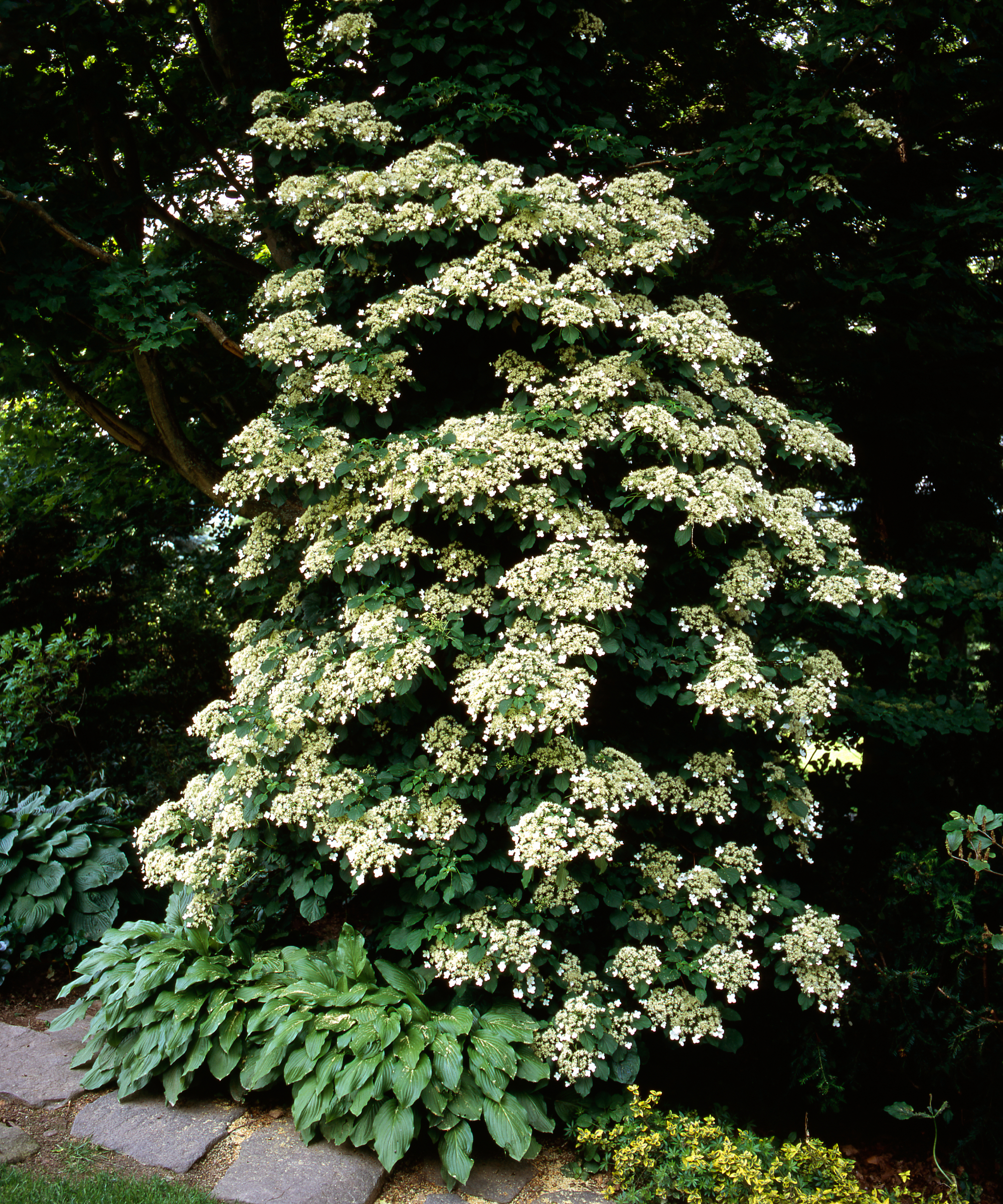
Another hydrangea that deserves a look is the spectacular climbing hydrangea (Hydrangea anomala subsp. petiolaris). It can cover large areas as it matures, clinging to fences, arbors, and other supporting structures with root-like tendrils. With the right support, this flowering vine can grow to 60 to 80 feet (20-27 m) long.
As it climbs, this shade-tolerant flowering vine boasts white, romantic lacecap flowers early in the summer. The blooms have a sweet fragrance, making it a feast for the senses. Though there is no autumn foliage color, the peeling bark is exposed in winter and looks quite appealing in the landscape.
Climbing hydrangeas are probably the least common type of hydrangea, so they can be difficult to find in stores or at local nurseries. You can buy climbing hydrangeas online from Fast Growing Trees, though, if you want to add a touch of easy and elegant drama to your garden.
Frequently Asked Questions
How do I know which type of hydrangea I have?
You can identify the type of hydrangea you are looking at by the shrub’s growth structure, leaf appearance, and the shape and color of its flowers.
What is the most low-maintenance hydrangea?
Most hydrangeas are quite easy-care if given the proper care. I have personally found panicle hydrangeas to be the easiest type of hydrangea to grow.
What kind of hydrangea blooms all season?
Check out the Endless Summer collection, which you can find at Fast Growing Trees. It includes hydrangea varieties that were developed to have a compact size, great color, and an extremely long bloom period. They bloom on both new and old wood.
This article features products available from third party vendors on the Gardening Know How Shop. Keep in mind that our plant inventory is limited—so if you’re thinking of purchasing, don’t wait!

Teo Spengler is a master gardener and a docent at the San Francisco Botanical Garden, where she hosts public tours. She has studied horticulture and written about nature, trees, plants, and gardening for more than two decades, following a career as an attorney and legal writer. Her extended family includes some 30 houseplants and hundreds of outdoor plants, including 250 trees, which are her main passion. Spengler currently splits her life between San Francisco and the French Basque Country, though she was raised in Alaska, giving her experience of gardening in a range of climates.
- Laura WaltersContent Editor